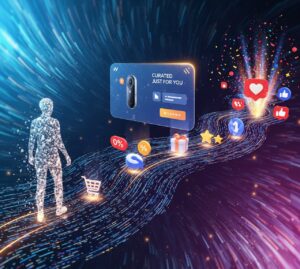UI vs UX: What’s the Real Difference and Why It Matters
Published June 4, 2025

Design
Introduction:
What Do UI and UX Even Mean?
Design Processes: The Heart of UX vs UI
UX vs UI: A Friendly Rivalry
Common Misconceptions About UX vs UI
Why It Matters
Tools of the Trade
Both UX and UI designers rely on powerful prototyping tools to bring their ideas to life. Here are some favorites:
Choose Your Adventure
Conclusion
So, you’ve been scrolling through job listings or chatting with your designer friends, and you keep hearing these two words: UI and UX. You’ve probably nodded along, pretending to understand the difference. But deep down, you’re thinking, Are these just fancy acronyms tech people made up to sound smart?
Well, I’m here to break it all down for you. Let’s examine the mysterious world of UI vs UX and discover how these two terms shape our digital experiences and why they’re not the same thing.
What Do UI and UX Even Mean?
To make things simple, think of UX as the journey and UI as the vehicle.- User Experience (UX): This is about how a user feels when they interact with a product. It’s the overall impression—whether navigating through an app is as smooth as gliding on ice or as frustrating as assembling IKEA furniture without instructions. UX fundamentals focus on usability, accessibility, and functionality. It’s all about making things effortless for the user.
- User Interface (UI): This, on the other hand, is the visual playground. Think colors, typography, buttons, sliders, and all the other shiny bits. It’s what users see and interact with directly. UI principles guide designers to make sure these elements are aesthetically pleasing and consistent.
Design Processes: The Heart of UX vs UI
Let’s talk about design processes—the secret sauce that separates amateurs from professionals. While UX and UI designers often collaborate, their workflows are distinct.UX: Research, Research… and More Research
UX is like being a detective. You need to figure out what users want, what they don’t want, and what makes them tick. The UX fundamentals include tasks like:- User Research: Interviewing users to understand their needs. (“So, Karen, why do you abandon your cart every time?”)
- Creating Personas: Imaginary users who represent your target audience. (Meet “Online Shopper Lisa” who loves free shipping but hates long forms.)
- Wireframes: Sketches or blueprints of how the product will look and work. Think of wireframes as a skeleton—no colors, no fonts, just structure. It’s like deciding the layout of your house before picking the wallpaper.
UI: The Art of Visual Delight
Once the UX groundwork is laid, UI designers come in to sprinkle their creative magic. They focus on UI principles, like consistency, contrast, and alignment, to make the interface visually engaging. UI designers are the ones who decide:- Should that button be blue or green?
- What font will scream “modern yet approachable”?
- Does that dropdown menu need a cute animation when it opens? (Hint: Yes, it always does.)
UX vs UI: A Friendly Rivalry
Picture UX and UI as two co-stars in a buddy-cop movie. One’s methodical and strategic (that’s UX), while the other is charming and full of flair (hello, UI). They need each other to succeed, but their approaches couldn’t be more different. Imagine planning a road trip.- UX is the map: It ensures you take the most efficient route and avoid detours into shady neighborhoods. UX makes sure you arrive at your destination without losing your mind.
- UI is the car: It’s the sleek, shiny Tesla that makes the trip enjoyable. You could drive a beat-up old van, but where’s the fun in that?
Common Misconceptions About UX vs UI
- Myth: UX and UI are interchangeable terms. Reality: That’s like saying “chef” and “food stylist” are the same. Sure, both are related to food, but one focuses on taste (UX) while the other focuses on presentation (UI).
- Myth: UX is only about usability, and UI is only about aesthetics. Reality: While usability is a big chunk of UX fundamentals, it’s also about emotional impact. Similarly, UI principles go beyond aesthetics—they ensure functionality is intuitive and enjoyable.
- Myth: You need to master both to be a designer. Reality: While some unicorns can do both, most designers specialize in one area. If you’re great at understanding user needs, you might shine in UX. If you have a keen eye for detail and love color palettes, UI might be your calling.
Why It Matters
Let’s look at some popular apps to see how UX and UI work together:- Spotify:
- The UX fundamentals ensure you can create playlists, download songs, and discover new music easily.
- The UI principles make the app visually sleek, with its dark mode interface and intuitive controls.
- Airbnb:
- Its design processes focus on simplifying the booking experience. Searching for a cabin in the mountains? Easy. Filtering by “pet-friendly”? Even easier.
- The UI shines through the inviting photos, clean typography, and a consistent use of their signature soft red color.
- Instagram:
- The UX ensures users can scroll endlessly
- The UI makes it addictive, with its seamless animations, bold icons, and delightful color gradients.
Tools of the Trade
Both UX and UI designers rely on powerful prototyping tools to bring their ideas to life. Here are some favorites:
- Figma: A crowd-pleaser for both UX and UI designers. It’s collaborative, cloud-based, and super versatile.
- Sketch: Loved by UI designers for its intuitive interface and robust design features.
- Adobe XD: Perfect for crafting wireframes, prototypes, and everything in between.
- InVision: Great for creating interactive mockups and gathering user feedback.



 Let’s talk
Let’s talk